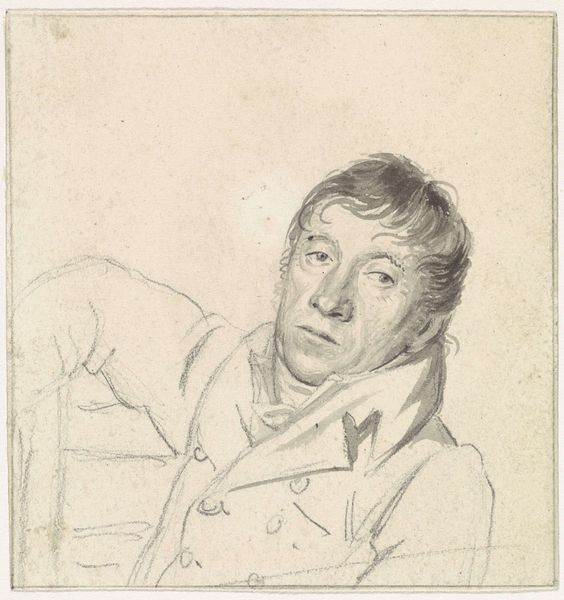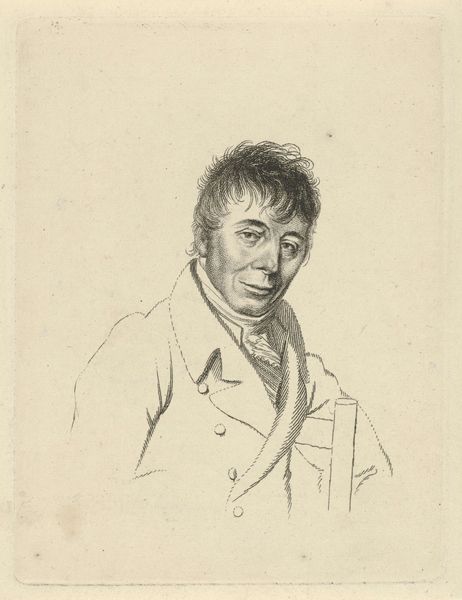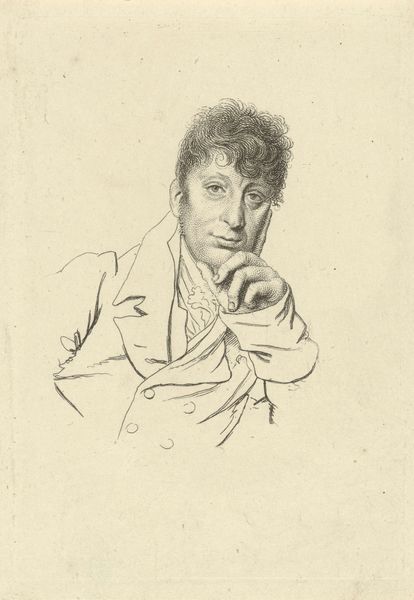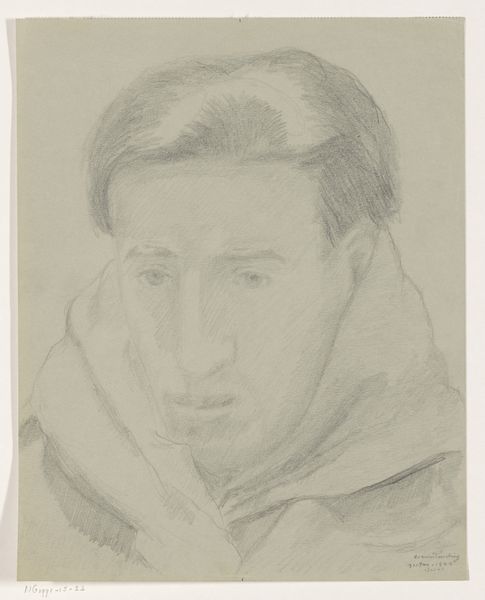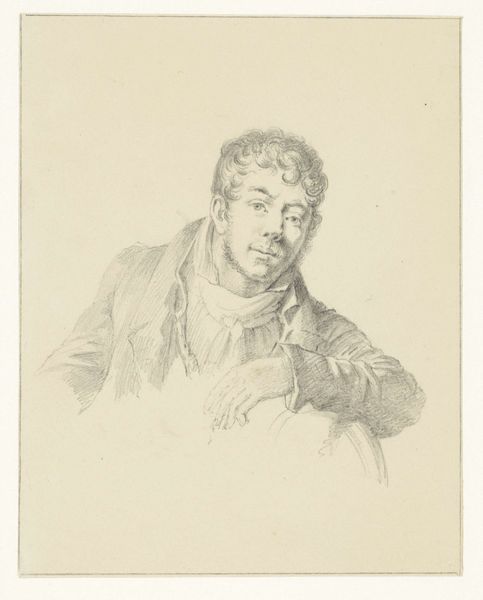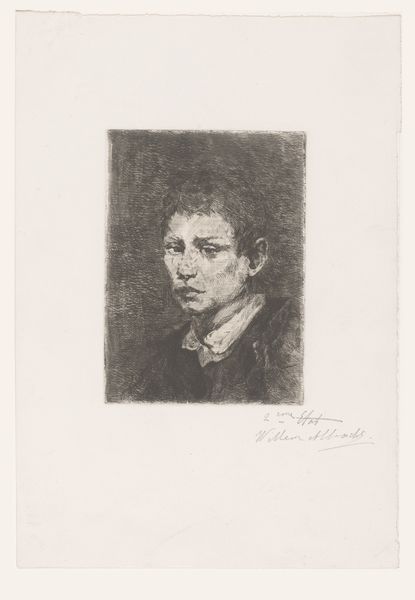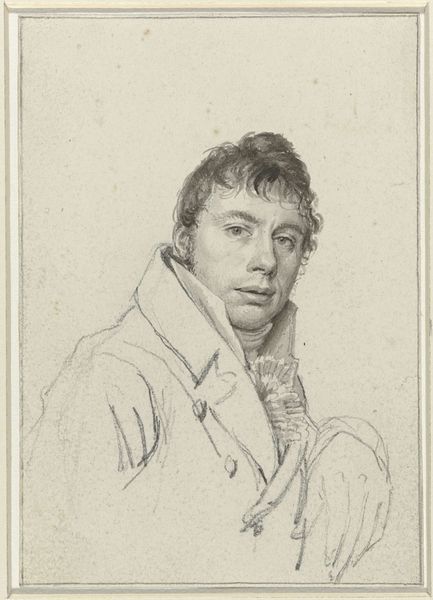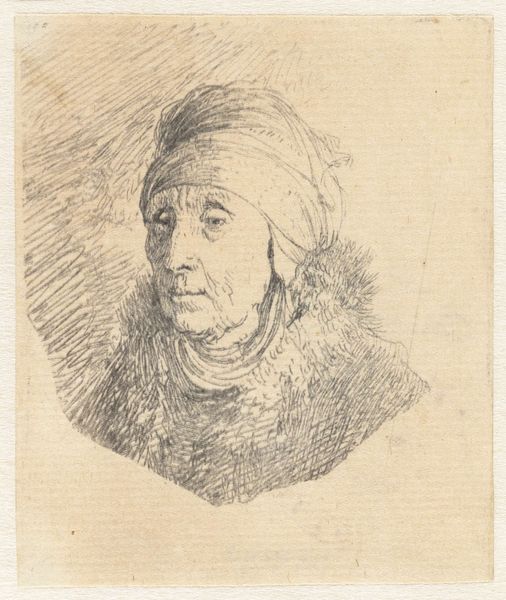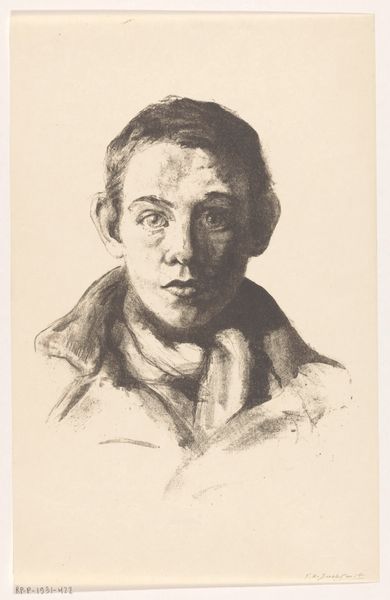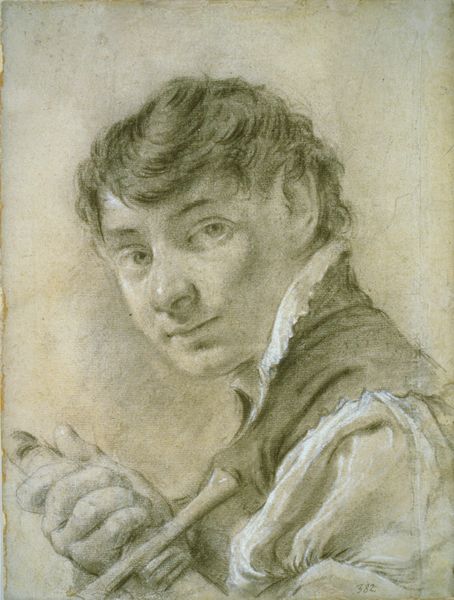
drawing, pencil
#
portrait
#
drawing
#
charcoal drawing
#
pencil drawing
#
romanticism
#
pencil
Dimensions: height 99 mm, width 71 mm
Copyright: Rijks Museum: Open Domain
Curator: Here we have a pencil drawing simply known as "Portrait of Antonie van den Bosch." It was likely made sometime between 1800 and 1850, but the artist is unfortunately anonymous. Editor: My immediate response is…melancholy. The sitter’s expression, the slight slump of his shoulders – there's a real sense of vulnerability. Curator: Agreed. The lack of distinct details about Antonie van den Bosch himself adds to that feeling, allowing us to project onto him our own interpretations of Romantic-era social anxieties. I am interested in the social hierarchies reflected in portraiture of this era. Was this commissioned? Was it an act of intimate observation or artistic study? What was his class? How does he embody—or challenge—contemporary codes of masculinity? Editor: Those questions definitely open it up. But focusing on the visual elements, I see the high collar of his coat practically obscuring his neck, as though he is protecting himself from exposure, and the soft curls remind me of halos. Perhaps suggesting innocence or even a spiritual sensitivity—perhaps subverting traditional codes. Curator: The Romantic period, particularly, placed huge emphasis on inner emotion, almost as an alternative to more socially sanctioned expressions. Editor: Indeed. This man almost seems to retreat inward. Curator: And that retreat could be read as resistance against societal norms. A conscious effort to prioritize authentic selfhood, especially for marginalized subjects within society at that time. The image subtly advocates for the acknowledgement—and celebration—of their intrinsic worth beyond the prescriptive dictates of that period. Editor: His eyes, so direct yet burdened. They resonate with a deep-seated humanity that I think transcends his specific time. It invites us to confront our own biases, doesn't it? Curator: Precisely. What this piece might lack in formal detail, it more than compensates for by demanding active critical participation from each and every contemporary observer. Editor: That engagement, I believe, reveals so much not only about Van den Bosch himself, but equally of our own values and emotional experiences as well. It has a universal power.
Comments
No comments
Be the first to comment and join the conversation on the ultimate creative platform.
